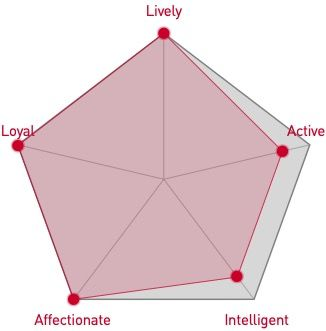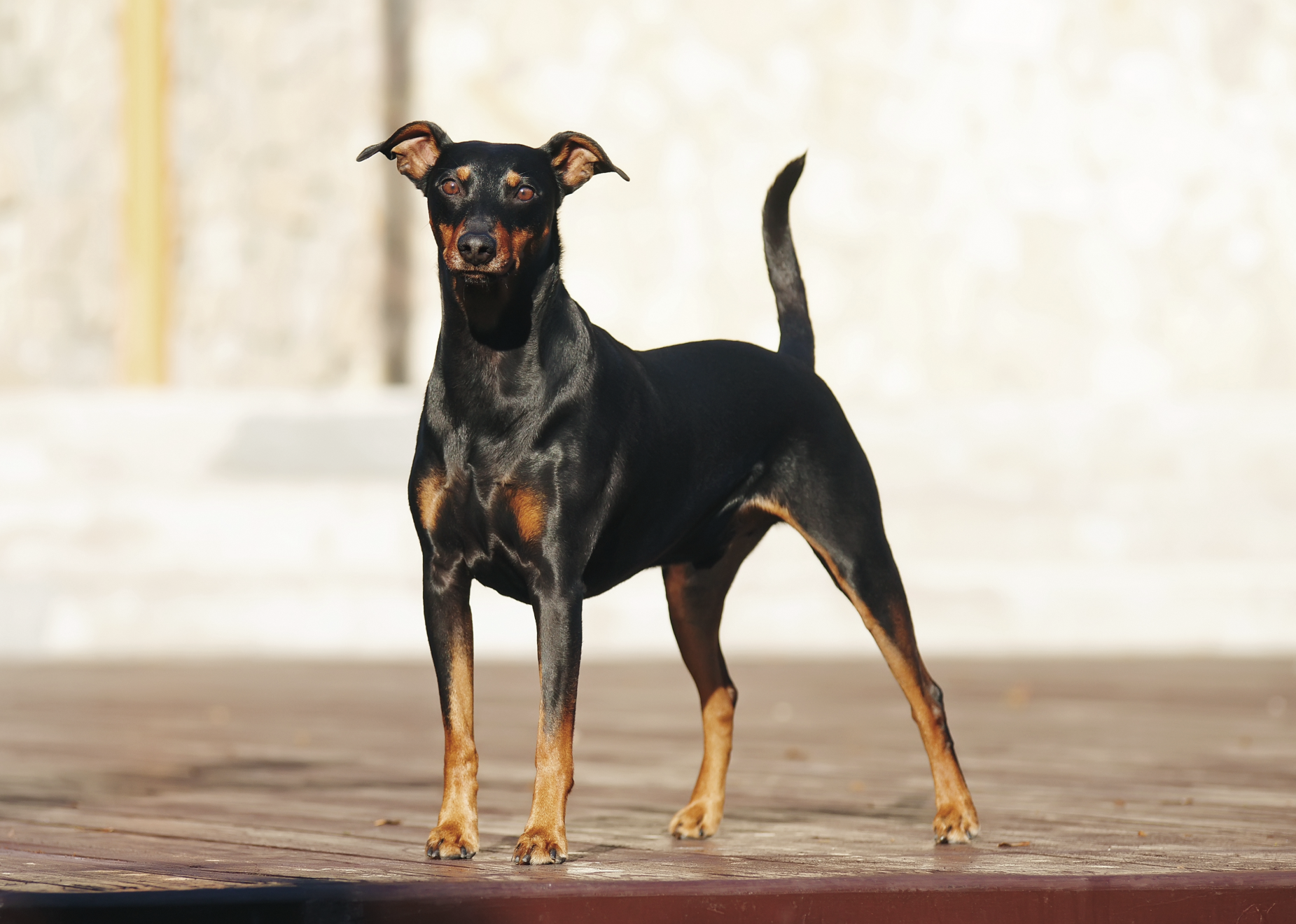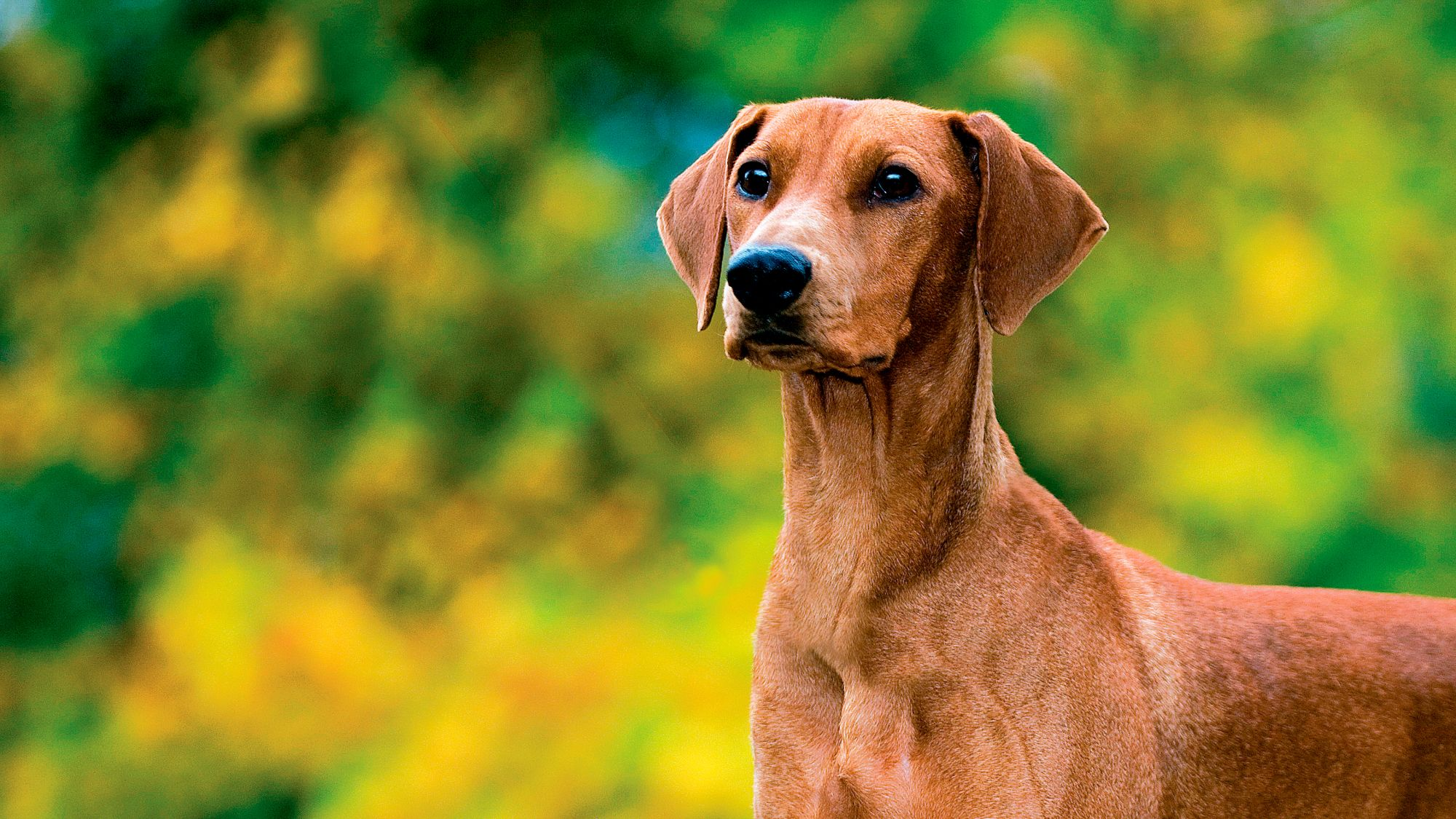
Let's talk German Pinschers
Bigger than the Miniature Pinscher and smaller than the Doberman, the German Pinscher is the sleek and able-bodied version that’s one of the prides of Germany. The progenitor of both of their sister breeds, the German Pinscher is a very vivacious and at the same time affectionate dog. Their beauty starts with a sleek coat topped by an elongated head and concerted yet warm eyes, all encasing a serious dog who thrives on being part of the family and is always eager to join in on the fun.
Official name: German Pinscher
Origins: Germany

| Drooling tendencies: |
|
Warm weather? |  |
| Shedding level: | Suited to apartment living? |  |
|
| Energy level (high, low, medium) *: | Low to Moderate | Family pet? * |
|
| Compatibility with other pets: |  |
Can stay alone? * |
* We advise against leaving pets alone for long stretches. Companionship can prevent emotional distress and destructive behaviour. Speak to your veterinarian for recommendations.
Every pet is different, even within a breed; this snapshot of this breed’s specifics should be taken as an indication.
For a happy, healthy and well-behaved pet, we recommend educating and socialising your pet as well as covering their basic welfare, social and behavioural needs.
Pets should never be left unsupervised with a child.
All domestic pets are sociable and prefer company. However, they can be taught to cope with solitude from an early age. Seek the advice of your veterinarian or trainer to help you do this.


| Baby age: | Birth to 2 months |
| Puppy age: | 2 to 12 months |
| Adult age: | 1 to 7 years |
| Mature age: | 7 to 10 years |
| Senior age: | From 10 years |

1/7
Get to know the German Pinscher
All you need to know about the breed
A powerful compact package, the German Pinscher is one of the gems of Germany. They are an agile working dog with a name that translates from the German “Pinscher” as “to bite” or “to grip,” an apt one for the dog’s original job as a fierce ratter. The breed has made their way into family life as a companion but also as a guardian, valued for their alert and responsive traits.
The German Pinscher is perhaps not the best dog for owners of small children since all that non-stop energy may result in someone getting knocked down, albeit unintentionally. Their high intelligence makes them easily trainable. Just make sure they know who has the upper hand at home.
Not as well-known as their Doberman Pinscher and Miniature Pinscher relatives, the German Pinscher is nonetheless the forebear of each breed, one of Germany’s oldest, in fact.
The German Pinscher has a graceful gait that helps them cover much ground, something this very active breed enjoys doing. The dog’s firm and muscular physicality is one of their selling points, and they’ve become a frequent competitor in the show ring as well. This breed’s elegant appearance mixed with a playful outlook makes the German Pinscher a devoted dog who guards their family with much affection and care.

2/7
2 facts about German Pinschers
1. Inside voice please
Guarding breeds are quick to utilise their “guard bark” in order to alert owners about anything out of the norm. The German Pinscher will do the same but it sounds like it’s coming from a dog five times their size, such is the depth of their bellow. Unnecessary barking – gladly – is not their thing.
2. In hot pursuit
Like many canines with dogged determination, the German Pinscher has an especially high prey drive. They are known to chase anything that wanders their way—from fellow household animals to smaller critters out in the yard. When there, make sure fences are secure, as the German Pinscher is a strong, lithe dog that will go the distance to follow something, if they want to.
History of the breed
The exact origin of the German Pinscher breed is unknown but it’s thought to have occurred between the late 1700s and late 1800s in Germany, with the breed descending from the now-extinct Rat Pinscher. The German Pinscher breed then came into their own with formal recognition in 1895.
The coat of the German Pinscher had previously come in pure black and salt and pepper, but the two variations disappeared in the mid-20th century. As with so many dog breeds, the German Pinscher almost became extinct between the two World Wars but thanks to the hearty efforts of a West German breeder named Werner Jung, the breed was sustained.
The German Pinscher was formally recognised by the Fédération Cynologique Internationale in 1955 and by the American Kennel Club in 2003.

4/7
From head to tail
Physical characteristics of German Pinschers
1. Ears
V-shaped drop ears, folded and set high.
2. Body
Medium-sized, hard and well-muscled body.
3. Coat
Very dense, close-lying shiny coat, almost exclusively black and chestnut, often deer-red to reddish brown.

5/7
Things to look out for
From specific breed traits to a general health overview, here are some interesting facts about your German Pinscher

6/7
Caring for your German Pinscher
Grooming, training and exercise tips
A close-lying and dense coat like that of the German Pinscher makes for an easy grooming routine. Running a brush through their fur each week should do the trick to rid it of dead hair, and baths will be needed only occasionally. Trim the nails of your German Pinscher regularly and brush their teeth often to prevent tartar build-up.
Exercise is a necessity for the German Pinscher. This is an active dog that will need one to three hours of exercise a day and will dive right into anything that challenges their physical and mental abilities, especially agility, obedience, and rally competitions—they can’t get enough.
Training the German Pinscher is also hugely enjoyable, for both parties involved. The breed is a smart one, as well as assertive and fearless, so may just try to have their way if they want to. They will therefore need a firm hand and repetitive commands when in training as well as an owner who establishes themself as boss. Your German Pinscher will develop good canine manners if treated with patience and respect. Very early obedience classes are a great idea. They’ll thrive because of it.
7/7
All about German Pinschers
The Doberman Pinscher and the German Pinscher are related but very distinct breeds, with different temperaments and origins. The German Pinscher may not be as well-known but is actually one of the foundation breeds for the Doberman Pinscher. The former is only half as high as the latter. Both breeds are prized for their courageousness and high intelligence, and often used for security purposes.
German Pinschers are athletic dogs with energy to burn so are a great choice if you’re a runner or the sporty type in general. They were bred for field sport, and also are completely devoted to their owners. Going the distance with your German Pinscher will be to both of your benefits.
translations.feature.breeds.otherbreeds
Read more on this topic

How your dog's nutrition needs change with age

How to adopt a dog

Things to consider before getting a dog
Sources
1 - Veterinary Centers of America https://vcahospitals.com/
2 - Royal Canin Dog Encyclopaedia. Ed 2010 and 2020
3 - Banfield Pet Hospital https://www.banfield.com/
4 - Royal Canin BHN Product Book
5 - American Kennel Club https://www.akc.org/



